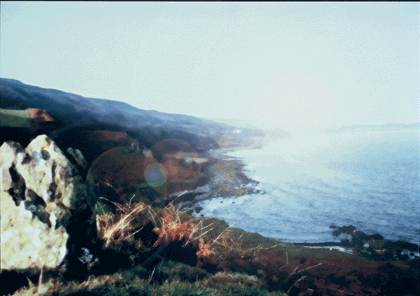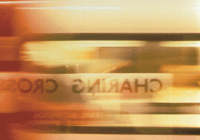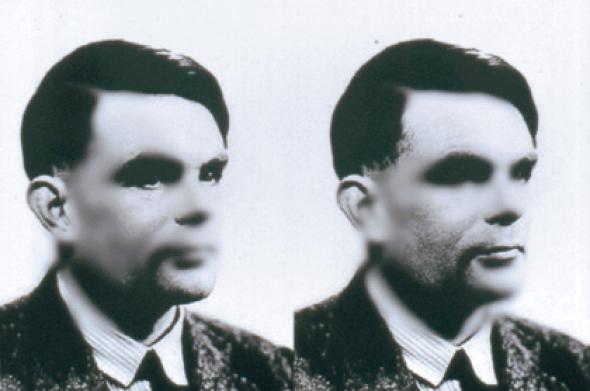Making the Right Connections
The Imaginaria prize has quietly eclipsed the ICA’s New Media Centre as the organisation's creative technology crown. Dr. Future inspects this year's jewels
Does anyone still remember the ICA's New Media Centre? It only seems like a short while ago that the NMC was the flagship of the new look Sun Microsystems ICA, buzzing with events, talks, project proposals and shiny leaflets fluttering around. Now all mention of it has disappeared from the ICA's publicity, the website is inactive, the director has left and the hi-tech computer studio has been locked away in a room that looks more and more like a cupboard under the stairs.
At least we still have the Imaginaria show. Now in its second year, Imaginaria stepped back ever so slightly from its quest to become the digital arts Turner Prize by commissioning new work instead of restaging old and selecting four short-listed artists instead of one star winner. All the rest of the usual art world paraphernalia was rolled out for the awards ceremony, however, including Peter Mandelson (Jarvis Cocker was unavailable), whose task was to congratulate the finalists at a champagne dinner while making vague references to the importance of the new digital media Brit pop whatsit.
All but one of the artists exhibited work which relied on elements and processes outside the gallery context. Scanner and Tonne presented Sound Polaroids, projected video and sound montages collected from samples taken from places in the urban landscape suggested to them on postcards by members of the public. Mongrel showed four different projects in which their Linker software had been used by the participants of various workshops to create Invisible Geographies, subjective maps of their communities, memories and journeys. Nina Pope and Karen Guthrie built a Multi- User Domain on the Internet and then made An Artist's Impression by making a scale model of the results in the gallery. The ICA show itself was only able to present one facet of these works, however, at the point where the process condensed into locatable products, although each of the above works struggled to overcome this. Sound Polaroids left little piles of postcard lying around for people to fill in, but they looked more like calling cards made to mark the occasion. The An Artist's Impression model drew the visitor into an addictively childlike world of toy cars, trains, tunnels, little plastic trees and grassy textured hills. But when I went up to one of the two terminals in the gallery to enter the MUD I was told by a smiley ICA attendant that they were only there for show. It reminded me of what it felt like when your father bought you a new train set and then insisted on playing with it himself.
 >> From Nina Pope and Karen Guthrie, An Artist’s Impression, 1999
>> From Nina Pope and Karen Guthrie, An Artist’s Impression, 1999
The Mongrel collective went furthest in trying to control the context of their work, firstly by presenting their laptops on top of cleaning trolleys in order to make the dÈcor of the Mall space more 'down market'. It failed, of course, but had the side effect of suggesting that the role of the Linker might be a collector and reassembler of cultural detritus. Mongrel also published their own User Manual complete with an essay by Matthew Fuller about 'software as culture' in which he argued the importance of the design of computer software as a medium for articulating conceptual material and cultural values. But there was no evidence that any of the critics covering the show had read his efforts or had understood them.
For the star of the show was undoubtedly Mark Dean whose work generated at least twice as much attention in the art press as any of the other exhibits. Dean's video installation No. Turing consisted of a portrait of Alan Turing, credited as being the creator of the theory of the binary computer and early apologist for artificial intelligence, whose features were blurred by ten different Photoshop filters applied according to a numerical sequence. This was juxtaposed with Universal (Turing Machine), in which a recitation from Mary Shelly's Frankenstein was simultaneously translated into a binary code of dots and projected onto the ceiling in a constellation reminiscent of a star chart. The passage quoted was where the creature asks, “What does this mean? Who am I? What am I? Whence did I come? What is my destination? These questions continually recur, but I am unable to solve them” and was enthusiastically described by various critics in such terms as “a powerful and poignant exploration of intelligence” and “simple and solemn, yet extremely rich in connotations.” Yet this reaction reveals more about the artistic conservatism and limited references of the writers concerned than it does any conceptual richness in Dean's work. His strategy of reducing a technology that is actively restructuring most aspects of our social relations into an abstract discourse of origins fails precisely because of its inability to address the situated practice of that technology. After all, it was Alan Turing's narrow belief in the internal logic of abstract rules which made him unable to realise that the internal logic of his own homosexuality could not be reconciled with the rules of the society that he lived in until it was too late.
This is a work which seems to critique the self-contained logic of the information society, but which implicitly supports it by restricting its field of engagement to the self-contained space of artistic speculation assigned to it by that same society. This argument is the classic avant garde position opposed to institutionalised arts practice. The question that arises from this is what values art making can contribute to social life once the distance between the two fields has been recognised and a willingness to overcome it has arisen? The situation is now greatly complicated by the fact that critical art, institutional art, commercial art and their audiences are all encoded into the same information economy.
 >> Scanner and Tonne, Sound Polaroids, 1999
>> Scanner and Tonne, Sound Polaroids, 1999
In the Imaginaria catalogue, Kodwo Eshun writes about the dynamics of this integrated information system in which we live and its relevance for creative practice. Taking off from a different essay by Matthew Fuller, he reminds us that the concept of the interface – the means by which the real subject (us) achieves access to the virtual object (the work) – is now obsolete. This is because, “urbanism is already as informational as it is infrastructural; pixels and concrete are interlinked at all levels of the modern city. Rather, interfacing triggers a chain of actions which oscillate between the possible and the functional.” This is potentially embarrassing for the ICA which states that Imaginaria aims to “redefine the interface between artist and audience”, if by that it means that it merely wants to reconstruct this interface of the gallery space. For the gallery has never been very good at being a catalyst that “triggers a chain of actions” – only at providing a distanced reflection on external actions. Eshun's analysis of the information society on which these works are premised seems contradicted by the very form of the show itself. This is because gallery work is connected to the information society in a specific way, as products following a predefined trajectory of cultural consumption that defines which actions are allowed.
Nicholas Negroponte famously said that if you want to understand the future, connect everything together. However, by using terms like 'connect' or 'interface' in an abstract, ill-defined way, we fail to distinguish between the connections in a networked society – between ones that are mobile and ones that are static, between the interface as transformation and as protocol. The impact of networking together every aspect of the life world does not necessarily result in its cross-the-board mobilisation; some things maintain a static position. It is this stasis that makes the 'interface' necessary. The gallery may provide a space for reflection on this, but it is no longer possible for such a disinterested contemplation to really appreciate these complex effects of our integration into the Matrix without losing sight of how it is incorporated into that system itself. The ICA, with its club nights, gigs, trendy bar and “fundamental commitment to nurturing and reframing the relationship between art, science and commerce”, should be in a better position than most art spaces to find a suitable format for an arts practice that overcomes the gallery's 'interface'. Or did the experiment with the New Media Centre prove that digital arts was in danger of connecting to all the wrong places and that it's better to concentrate on throwing swanky parties for dodgy politicians?
ImaginariaICA, 2 – 31 October, 1999
Dr. Future<richardATdig-lgu.demon.co.uk>
Mute Books Orders
For Mute Books distribution contact Anagram Books
contact@anagrambooks.com
For online purchases visit anagrambooks.com








